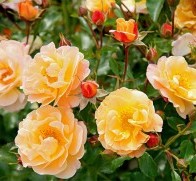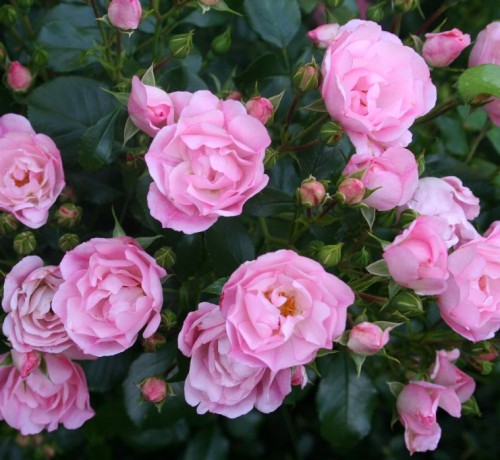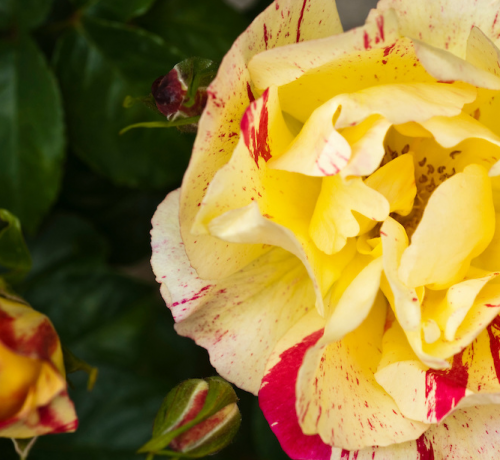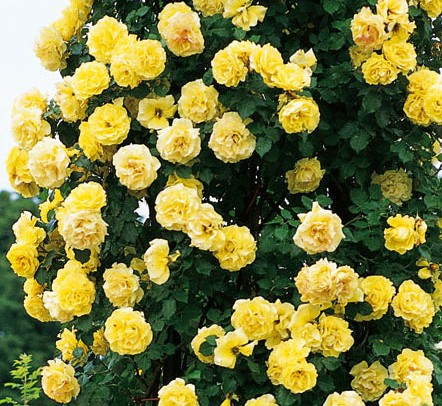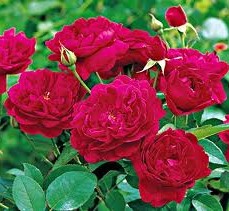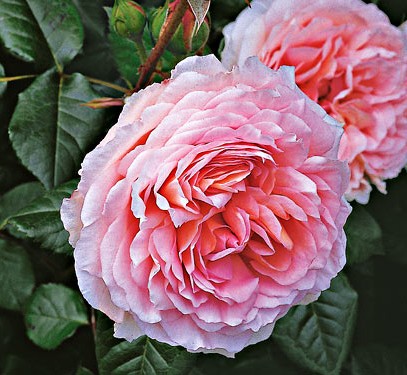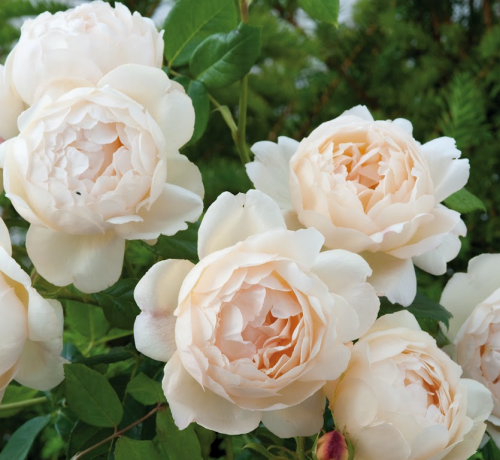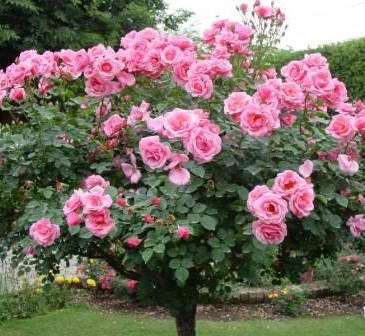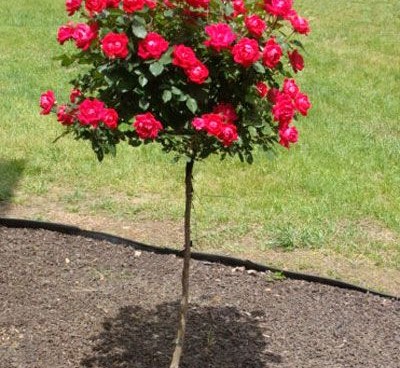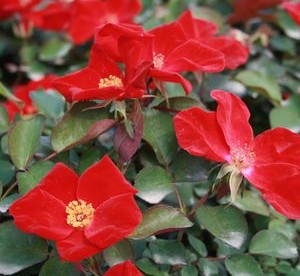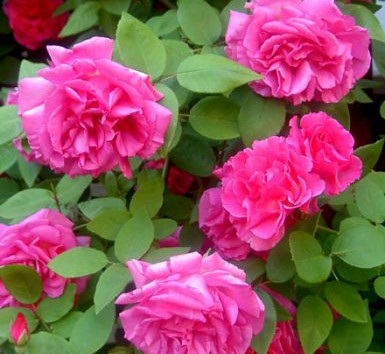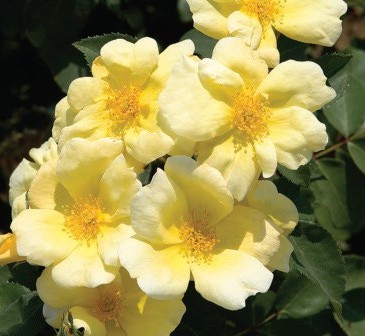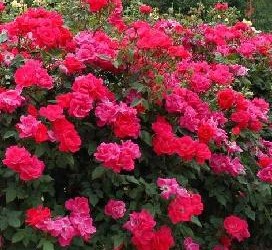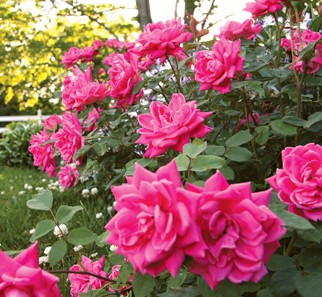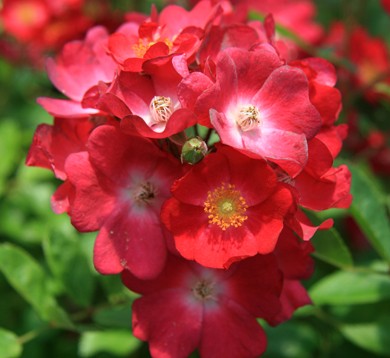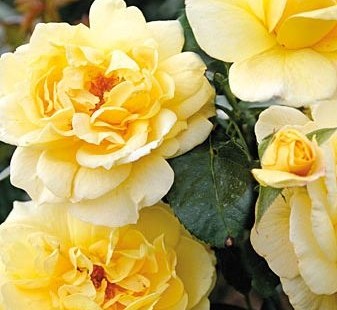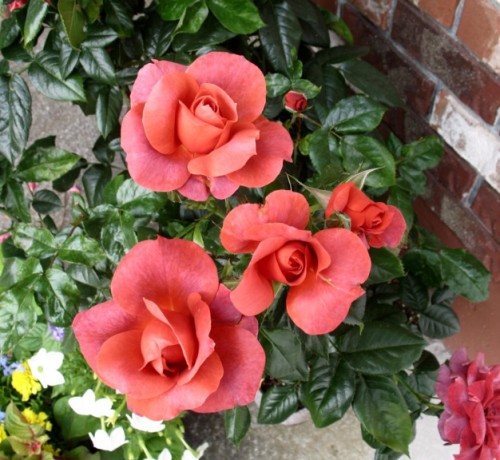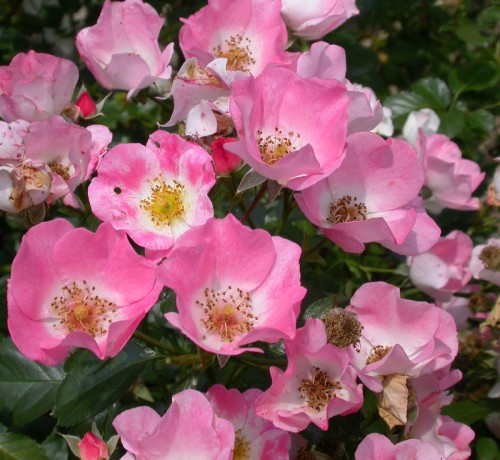|
| |
Carpet Roses: Ground cover roses are popular around the world because once established they can provide up to 2,000 flowers per season, have a long flowering period and are easy to care for. Also exceptional disease resistance and drought tolerance. For best results fertilize once early season and once late season, keep well watered during it’s first year and cut back with shears once a year to one third in size late winter. In spring they burst forth again with glossy new green foliage ready for the new flowers in late Spring. Prefers well drained, rich soils in full sun. |
| |
Climbing Roses: Roses do not climb in the way that many vines do, by entwining themselves onto vertical structures. Most roses produce long, vigorous canes that can be assisted to reach upwards of 15 feet, where they will produce showers of bloom in an abundance of classic beauty. They are also a charming way to disguise an unattractive fence, wall, or shed that can’t be removed. Plants develop either large, single flowers or clustered blooms on a stem. Climbers may bloom once a season or continually, depending on the variety. Climbers can be trained to bloom more heavily by leading their canes in a horizontal direction. Prefers well drained, rich soils in full sun. For best results fertilize once early season and once late season, keep well watered during it’s first year and cut back with shears once a year. |
| |
David Austin Roses: British rosarian David Austin bred these David Austin® Rose varieties to combine the flower forms and fragrances of Old Roses with the repeat-blooming trait of modern Roses. English Roses may be grown as magnificent, shapely shrubs or trained as short climbers. Large, double, fragrant flowers, very heavily petaled. They are also excellent cut flowers. Prefers well drained, rich soils in full sun. For best results fertilize once early season and once late season, keep well watered during it’s first year and cut back with shears once a year |
| |
Rose Trees:The rose tree is also known as the Rose Standard. Rose trees differ from rose shrubs in that they are intentionally created to resemble trees. The trees must be regularly pruned to achieve and maintain the desired look. Pruning varies according to the type of roses used, which are most often the grandiflora, floribunda, hybrid tea and miniature rose. There are different types of rose trees, with a new type offering two separate tiers of flowers. Known as the “double decker,” this rose tree has flowers on the top as well as flowers closer to the ground. Other rose trees include weeping varieties, which have arched roses overflowing and cascading to the ground. Unlike regular roses, which only require a layer of mulch in the winter, the rose tree must be protected from top to bottom. Prefers well drained, rich soils in full sun. May require more watering than other rose types. For best results fertilize once early season and once late season, keep well watered during it’s first year and cut back with shears once a year.
|
| |
Shrub Roses: A hardy, easy-care plant. Some make good groundcovers, other work well as hedges and screens while still others fit well in a flowering border. Many of the modern shrubs bloom continuously throughout the season, and some old varieties have a single flush of flowers in the spring. You can find all types of flower forms from single (five to eleven petals) to full double blooms, and in many different colors and shades. Prefers well drained, rich soils in full sun. Most commonly available shrub roses are fully winter hardy. Pruning for the most part consists of pruning any winter kill and removing older canes in spring. Unlike most roses, shrub roses should not be deadheaded, or they will not produce their attractive fruit (hips). For best results fertilize once early season and once late season, keep well watered during it’s first year and cut back with shears once a year. |
